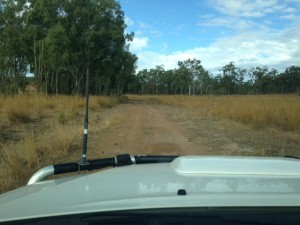Managing your biosecurity risks
November 9th, 2015
 How do you protect your land from biosecurity risks? I believe that prevention is better than cure. But with so many pathways onto your property (including livestock, native animals, visitors, feed, soils, gravel, hay and grain etc), weeds and pests can be formidable opponents!
How do you protect your land from biosecurity risks? I believe that prevention is better than cure. But with so many pathways onto your property (including livestock, native animals, visitors, feed, soils, gravel, hay and grain etc), weeds and pests can be formidable opponents!
That’s why the early detection of biosecurity threats is critical to protecting your interests. Routine property inspections can assist you to identify both existing and emerging biosecurity threats and ensure you can contain and manage any significant federal, state, locally declared pest, in crop weed, or grazing management weed on your property.
Why monitor for new weeds and pests?
Early detection gives you the chance to control weeds and pests before they become a serious problem. And controlling a small outbreak is certainly a lot easier and cheaper than trying to address a major infestation down the track.
Who should complete the inspections?
When it comes to inspections, there’s no substitute for ‘calibrated eyeballs’! Ideally, you’ll have a landholder, property manager, environmental staff or other people who are familiar with your property and experienced in identifying weeds and pests at the various stages of their lifecycle. To help you with this, there are also a range of handy weed and pest ID resources available or you can contact your local Council Weeds Officer, State Biosecurity Officer or specialist weed advisor (TH9).
When should inspections be completed?
Ideally, inspections should be undertaken pre and post disturbance, prior to any change in land ownership or lease arrangements, after rainfall and fire events or at a minimum of every two years. Inspections should be undertaken more frequently when a known priority pest has been identified.
Where should inspection efforts be focussed?
Good areas to focus on include waterways, entry and exit routes, internal roads or tracks, disturbed areas, livestock feeding and water points or cattle camps and sites adjacent to known weed and pest infestations. Your survey frequency can be adjusted depending on the type of property, core activities, seasonal conditions, risks and any specific compliance requirements you may have.
What information should be collected?
To give you the best chance of detecting changes over time, inspections should consistently identify, record and map the location of biosecurity issues along with any other relevant data (such as density, health of plants and maturity of infestations etc).
How should inspection data be used?
Once you’ve completed your inspections, it’s best to take a quick look over your property management plans to ensure your weed and pest control measures are making the best use of your time and money. You might like to consider - Has there been any change? Are there any new or emerging threats? Do you have any follow-up requirements? Are there any new products or techniques available which could assist?
All the best with your inspections and if you’d like to talk with me about tackling your weed and pest challenges, please get in touch.